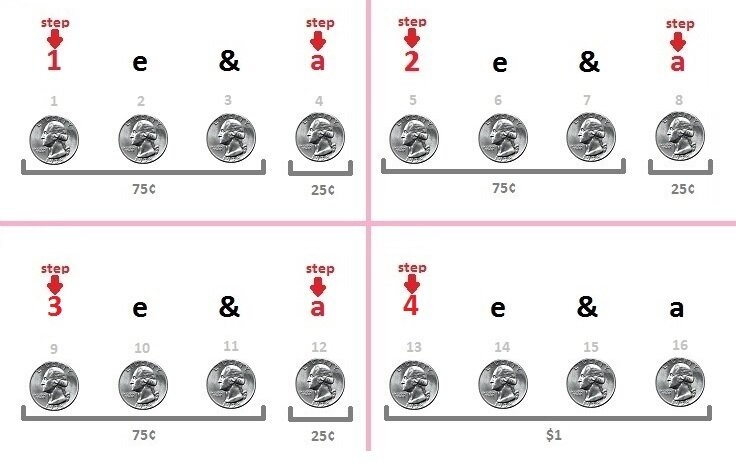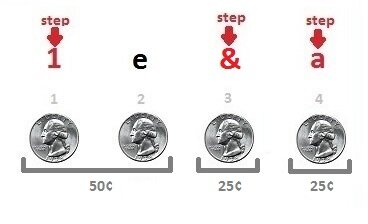The 9 Rhythms of Samba 
2 March 2016
Samba is a polyrhythmical dance, because there are so many different rhythms possible in this dance compared to the others. Knowing these rhythms is invaluable to the competitor, as one of the most important things judges look for in Samba is correct timing. Below are listed the different main rhythms found in Syllabus and Open Samba, as well as descriptions of the rhythms themselves, and example figures these rhythms are used in. Other, more complex rhythms, can be created by combining aspects of the main rhythms listed below. Each rhythm is given in multiple ways: divisions of rhythms (whole, halves, and quarters of beats), Quicks and Slows, and also counts. These are all different ways of expressing the same thing.
Rhythm 1
[3/4-1/4-Whole] or [Slow 'a' Slow] or [1 a 2]
Perhaps the most characteristic rhythm in Samba, and one which is most often danced wrong, is the 3/4-1/4-Whole rhythm. This rhythm consists of three steps over two beats of music: Between the first step and the second step, there is 3/4 of a beat of music; between the second step and the third step, there is 1/4 of a beat of music; and between the third step and the next figure, there is a full beat of music. To hear this rhythm, count at an even pace from 1 to 8, and clap on 1, 4, and 5 over and over.

This rhythm is used in the Bota Fogos, Samba Walks, and the Whisk.
Rhythm 2
[3/4-1/4-3/4-1/4-3/4-1/4-Whole] or [Slow 'a' Slow 'a' Slow 'a' Slow] or [1 a 2 a 3 a 4]
This rhythm is very close to our first rhythm, in that it uses 3/4's, 1/4's, and wholes. The difference is that in this rhythm, the first bar is repeated three times, before ending with a whole beat on the fourth bar, meaning it consists of 7 steps over 4 beats of music. This rhythm can be extended further, dancing, let's say, 11 steps over 8 beats of music. To hear this rhythm, count at an even pace from 1 to 16, and clap on 1, 4, 5, 8, 9, 12, and 13 over and over.

This rhythm is used in Volta movements, including Travelling Voltas to and the Roundabout.
Rhythm 3
[Whole-Whole] or [Slow Slow] or [1 2]
This is the simplest rhythm of all. It is a straight rhythm, meaning it doesn't divide beats at all. For this rhythm, you step once per beat. To hear this rhythm, just clap to the normal beat of Samba, or count at an even pace from 1 to 8 and clap on 1 and 5 over and over.

This rhythm is used in various figures from the alternative to the Man's Foot Changes, and even in Cruzados Walks (not including the Locks).
Rhythm 4
[Whole-1/2-1/2] or [Slow Quick Quick] or [1 2 &]
Just like the 3/4-1/4-Whole rhythm, this rhythm consists of three steps over two beats of music, but the beats are divided differently. The first step lasts for an entire beat of music, and the second beat is divided evenly in half, allotting one half to each of the two remaining steps. To hear this rhythm, count at an even pace form 1 to 8 and clap on 1, 5, and 7 over and over.

This rhythm is used in Rocks Actions, such as the Back Rocks and Closed Rocks, and also in Rolling Actions, such as the Natural Roll and the Reverse Roll.
Rhythm 5
[1/2-1/2-Whole] or [Quick Quick Slow] or [1 & 2]
This Rhythm is just like the Whole-1/2-1/2 rhythm, except that it is flipped. It is the first beat that is divided in half, and the second beat which has only one step. To hear this rhythm, count at an even pace from 1 to 8 and clap on 1, 3, and 5 over and over.

This rhythm is used in the Argentine Crosses and Samba Locks, and and is combined with the Whole-Whole rhythm to form the Cruzados Walks and Locks, and the Plait.
Rhythm 6
[1/2-1/2-1/2-1/2] or [Quick Quick Quick Quick] or [1 & 2 &]
This rhythm consists entirely of half beats, and fits four steps into two beats of music. Each step takes the same amount of time: exactly half a beat. To hear this rhythm, count at an even pace from 1 to 8 and clap on 1, 3, 5, and 7 over and over.

This rhythm isn't used by itself in the Syllabus, but when combined with the Whole-1/2-1/2 rhythm, it forms the Corta Jaca (SQQ QQQQ).
Rhythm 7
[3/4-1/2-3/4] or [1 2 3]
This is certainly one of the most unusual rhythms in Samba. It is so unusual, it can't even be categorized it into Slows and Quicks. Like most other rhythms we've discussed, it consists of three steps over two beats, but they are divided quite differently. The first step happens at the beginning of the first beat, the second step happens on the the fourth quarter (just like in the 3/4-1/4-Whole rhythm), but the last step happens on the sixth quarter. Because this rhythm is so hard to count, it is often advised that beginners count it 1-2-3 and try to make the counts as even (and Waltz-like) as possible, but if you want to really hear what this rhythm sounds like, count at an even pace from 1 to 8 and clap on 1, 4, and 6.

This rhythm is used in the Promenade and Counter Promenade Runs, and the Lady's Three Step Turn.
Rhythm 8
[3/4-3/4-1/2] known as the Clave (klah-vey)
The clave is very close to the 1-2-3 rhythm discussed immediately above, but the beats are divided slightly differently. Although this rhythm comes from traditional Mambo, it is expressed in a lot of Samba music today, and some dancers prefer to use this rhythm over the 1-2-3 rhythm to reflect this. To hear this rhythm, count at an even pace from 1 to 8 and clap on 1, 4, and 7.

This rhythm is not traditionally used in any Syllabus figures, but it can be substituted anywhere the 1-2-3 rhythm is danced.
Rhythm 9
[1/2-1/4-1/4] or [1 & a]
This is the fastest rhythm in all of Samba, squeezing three steps into just one beat of music. The first step is the longest beat, lasting only half a beat, and the other two steps are twice as fast. It is essentially a SQQ timing done twice as fast. To count this rhythm, count at an even pace from 1 to 4 and clap on 1, 3, and 4, over and over.

This rhythm is not used in the Syllabus, but is most notably used in Batucadas. It is also used in spins (usually for the Lady) done at great speeds.